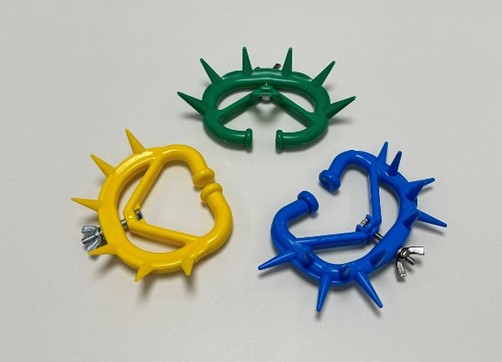Experts told how dangerous a new subspecies of coronavirus
'Centaur' is a variation of the omicron strain, first discovered in India in May 2022. Previously, it was identified in a number of European countries, the usa , CANADA, Japan, and Australia.
According to the interviewed experts, a feature of the new sub-variant of "omicron" is increased infectivity, since it is believed that the virus has an increased ability to overcome immunity. It is predicted that the "centaur" may have more opportunities to affect the lower respiratory tract with the development of pneumonia.
The "centaur" has no special symptoms that would distinguish it from other sub-variants of the "omicron". Often the symptoms are the same as with SARS, the course in most cases is not severe. Patients complain of perspiration, dry mouth or sore throat. Body temperature rises during the first days of illness, may be with chills and muscle pain. A few days later, nasal congestion or a runny nose appears.
Decreased or lost sense of smell does occur, but not as often as with Delta variant infection, and the sense of smell recovers more quickly.
Sometimes there are gastrointestinal manifestations. In some, the infection may be asymptomatic or oligosymptomatic, manifested simply by short-term fatigue or malaise.
Galina Lifshits, Professor, DOCTOR of Medical Sciences, HEAD of the Laboratory of Personalized Medicine, ICBFM SB RAS, general practitioner, cardiologist of the highest category, CNMT:
- The rise in the incidence in Novosibirsk has already begun over the past few weeks. The number of PCR tests in labs is not yet on the rise (although there is growth) because many people have stopped doing PCR tests even when they have symptoms of the disease. The fear of covid has decreased, the information field about the need for testing and accurate diagnosis has decreased, some do home express tests, but also not as much as before. If a month ago, single patients with covid were detected during PCR testing, now there is a large percentage of positive samples among those who applied to the laboratory for testing.
Read on RBC Pro Pro How the ruble reached equilibrium and how long it will last Articles ProWhat not to tell in an interview about your children Instructions for Pro Direct Selling Bypass:what happens to the d2c market under sanctionsPro Why it's only a matter of time before selling Netflixhow to answer awkward kids questions Instructions Pro You have 8 seconds.How to Present and Sell an Idea Summary Pro Shares of Polymetal are up 82% from a low.We understand why PredictionsAmong Russian vaccines, Sputnik V is considered effective (the developer is the Gamaleya Institute, Moscow). Vaccines "Epivaccorona" ("Vector", Novosibirsk) and "Kovivak" (Chumakov Center, Moscow) are no longer produced, as they have not proven antiviral efficacy.
"Sputnik V" was developed on the basis of the first variants of coronavirus strains ("wuhan"), for this variant, protection against a severe course was more than 90%. With the advent of new strains, the protective efficacy of the vaccine against a severe course has somewhat decreased, and in relation to the "omicron" subtypes it is about 50%. The Gamaleya Institute has developed a version of the Omicron vaccine, which is being prepared for production.
Tatyana Ovsyannikova, Doctor of Medical Sciences, Chief Physician of the network of multidisciplinary clinics for the whole family "1 + 1":
— The centaur's growth dynamics is 16% higher than the previous variants. Most likely, the increase in the incidence will be from mid-August and early autumn, virologists suggest, six months after vaccination against coronovirus, a new infection is possible, but the severity of the course and the need for hospitalization are still unpredictable. Although WHO has proposed a return to the mask regime in public places due to the increase in the incidence of covid-19 over the past week.
According to Rospotrebnadzor, no tightening of security measures is expected with an increase in the incidence, but the need for revaccination is the main one for maintaining and increasing herd immunity. Features of reducing immunity to coronavirus infection may lead to the fact that the Russians will face a “two-humped” wave of COVID-19, according to immunologists, somewhere by September.
According to WHO, more than 5.7 million new cases of coronavirus were registered in the world over the past week, up 6% compared to the previous week.
Varvara Veretyuk, therapist, leading doctor of the Zdravitsa clinic:
- A new rise in the incidence, many doctors are already registering at the reception. At my appointment, I noted an increase in the number of cases of COVID-19 since mid-July. This growth is expected to continue for several more weeks.
Despite a mild course of infection in most cases, BA.2.75 poses a threat to unvaccinated people, especially those at high risk of severe COVID-19. The risk group includes the elderly, people with cardiovascular diseases (especially after a heart attack, stroke), some chronic diseases of the lungs, kidneys, liver, cancer, obesity, type 2 diabetes, pregnant women.
On the other hand, so far, neither in the US nor in the UK, the “centaur” has been able to displace the sub-option of Omicron BA.5. It is the latter that so far attracts more attention, and there is preliminary data from scientists that the BA.5 variant is more pathogenic than the BA.1 and BA.2 variants, but so far there is no such information about the BA.2.75 subtype.
Judging by data on the molecular structure of the virus, the “centaur” is able to evade previously formed antibodies to other subtypes of coronavirus in the same way as the “omicron” BA.4 and BA.5 variants. However, in real practice, vaccination and revaccination still significantly reduces the risk of severe course and death from COVID-19 caused by the “micron” of different subvariants.



























































